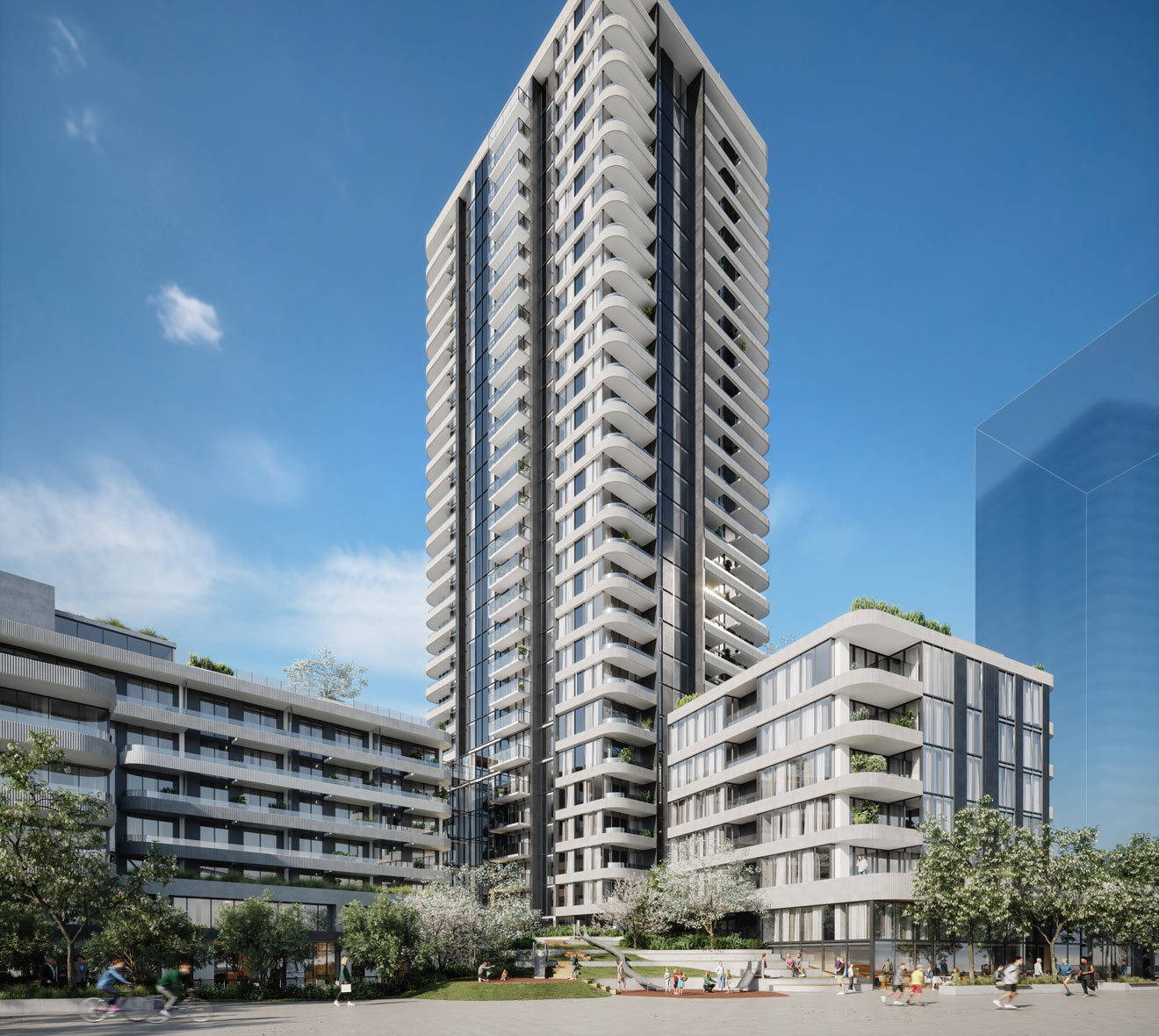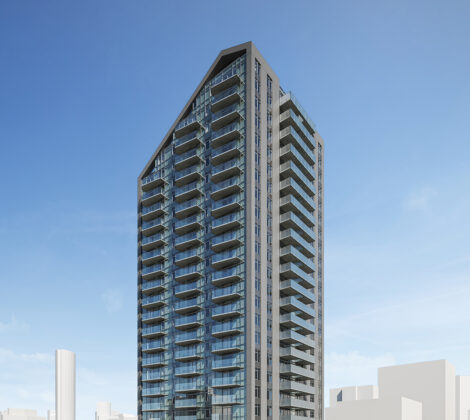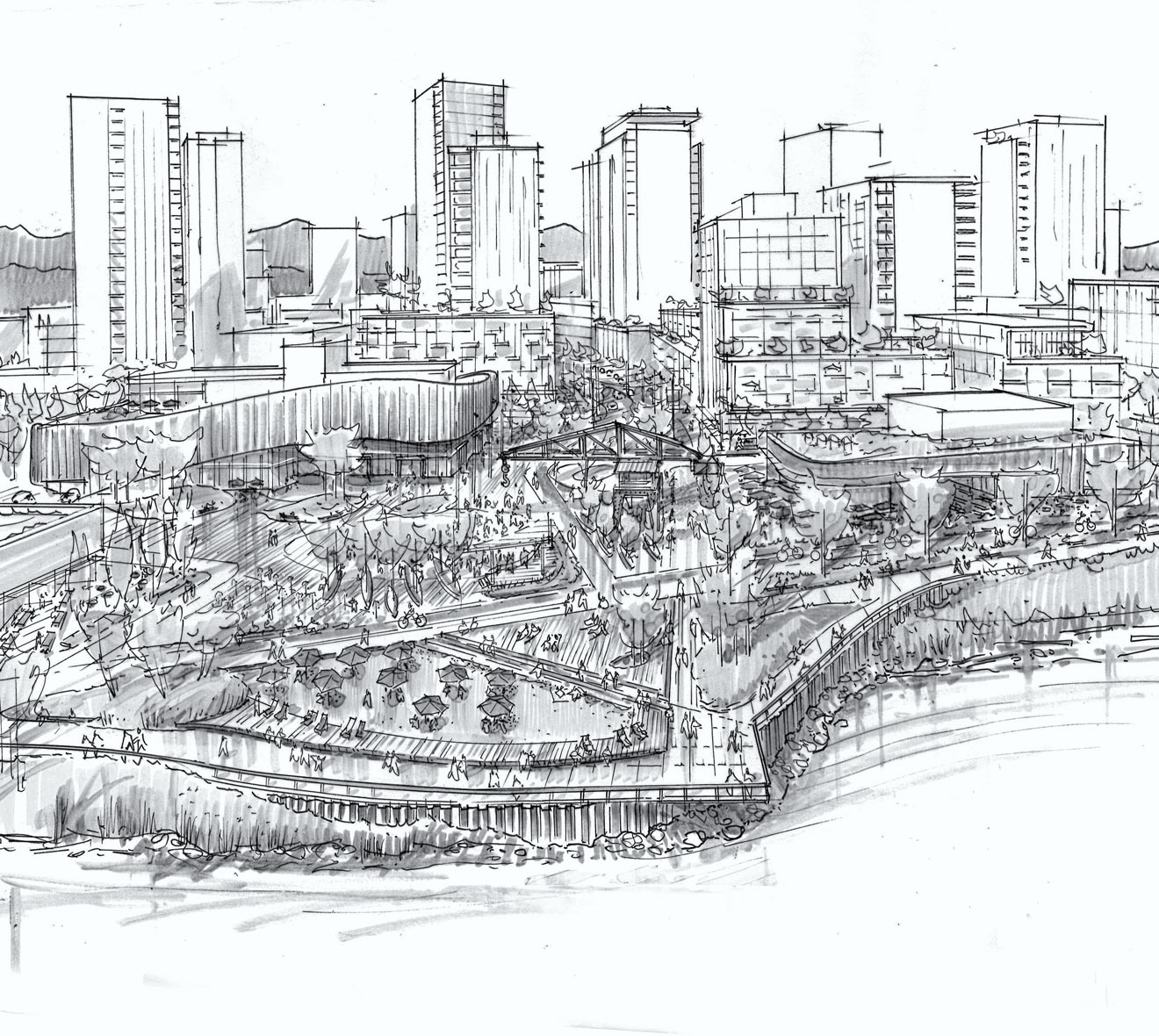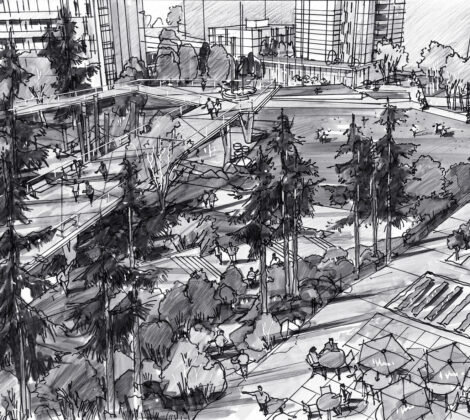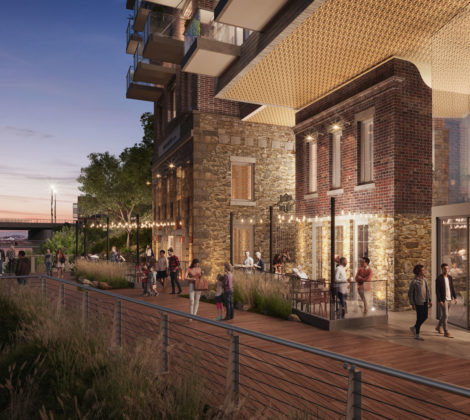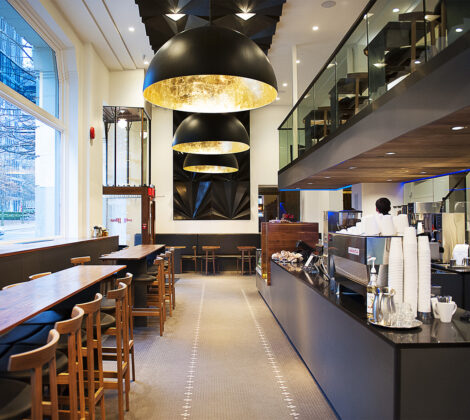Situated in the West End, the design of 1188 Cardero draws on three key influences: the site’s ‘gateway’ position on the downward slope of Davie Street to English Bay; the historic Rogers Mansion to the east; and the rich context of mid-century modern apartment blocks that characterize the architectural language of the neighbourhood. This residential tower will provide secured rental housing, 20% of which will be below-market units, and features an amenity courtyard with children’s play area, a rooftop terrace with views to English Bay, and a variety of indoor amenity space for all residents.
The design incorporates precast concrete panels with a geometric motif referencing both the modernist context of the West End and the materiality of the stone on the neighbouring Rogers Mansion. The metal panel cladding adds dimension with slight variations in colour and depth, inspired by cedar bark. The building enhances the public realm through thoughtful landscape design, providing seating along Davie Street that creates a gentle transition to the more open, active entrance at the corner of Davie and Cardero.







